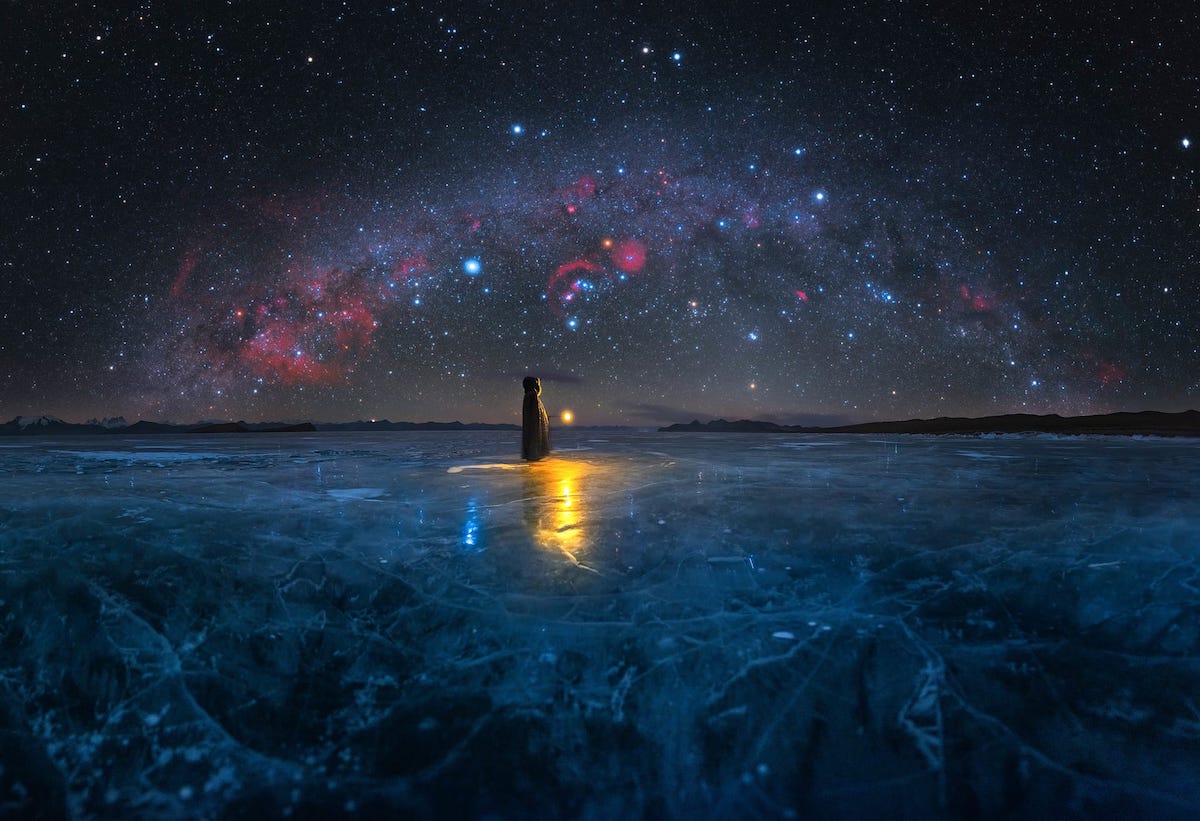Page 1 of 1
Found Images: 2024 November
Posted: Sat Nov 02, 2024 6:21 pm
by bystander
Have you seen a great image or video somewhere that you think would make a great APOD? Nominate it for APOD! Please post as much information here as you have about the image/video with a link to any source(s) for it you know of here, and the editors will take a look.
When posting the image itself, please do not post anything larger than a thumbnail here; please honor the copyright holder's copyright.
Please keep hotlinked images under 500K.
Thank you!
<< Previously
Re: Found Images: 2024 November
Posted: Tue Nov 05, 2024 4:38 pm
by Ann
Massive young open cluster Westerlund 1 by JWST's NIRCam
https://esawebb.org/images/potm2409b/
ESA/Webb wrote:
The unique draw of Westerlund 1 is its large, dense, and diverse population of massive stars, which has no counterpart in other known Milky Way galaxy clusters in terms of the number of stars and the richness of spectral types and evolutionary phases. All stars identified in this cluster are evolved and very massive, spanning the full range of stellar classifications including Wolf-Rayet stars, OB supergiants, yellow hypergiants (nearly as bright as a million Suns) and luminous blue variables...
The Milky Way galaxy used to produce many more stars, likely hitting its peak of churning out dozens or hundreds of stars per year about 10 billion years ago and then gradually declining ever since. Astronomers think that most of this star formation took place in massive clusters of stars, known as “super star clusters”. These are young clusters of stars that contain more than 10,000 times the mass of the Sun, packed into an unbelievably small volume...
Westerlund 1 is an impressive example of a super star cluster: it contains hundreds of very massive stars, some shining with a brilliance of almost one million Suns and others two thousand times larger than the Sun (as large as the orbit of Saturn). Indeed, if the Solar System was located at the heart of this remarkable cluster, our sky would be full of hundreds of stars as bright as the full Moon.
It appears to be the most massive compact young cluster yet identified in the Milky Way galaxy: astronomers believe that this extreme cluster contains between 50 000 and 100 000 times the mass of the Sun, yet all of its stars are located within a region less than six light-years across. Even so, it is the biggest of these remaining super star clusters in the Milky Way galaxy, and the closest super star cluster to Earth.
Ann
Re: Found Images: 2024 November
Posted: Wed Nov 20, 2024 9:24 am
by bowline
Ann wrote: ↑Tue Nov 05, 2024 4:38 pm
Massive young open cluster Westerlund 1 by JWST's NIRCam
https://esawebb.org/images/potm2409b/ tap road
ESA/Webb wrote:
The unique draw of Westerlund 1 is its large, dense, and diverse population of massive stars, which has no counterpart in other known Milky Way galaxy clusters in terms of the number of stars and the richness of spectral types and evolutionary phases. All stars identified in this cluster are evolved and very massive, spanning the full range of stellar classifications including Wolf-Rayet stars, OB supergiants, yellow hypergiants (nearly as bright as a million Suns) and luminous blue variables...
The Milky Way galaxy used to produce many more stars, likely hitting its peak of churning out dozens or hundreds of stars per year about 10 billion years ago and then gradually declining ever since. Astronomers think that most of this star formation took place in massive clusters of stars, known as “super star clusters”. These are young clusters of stars that contain more than 10,000 times the mass of the Sun, packed into an unbelievably small volume...
Westerlund 1 is an impressive example of a super star cluster: it contains hundreds of very massive stars, some shining with a brilliance of almost one million Suns and others two thousand times larger than the Sun (as large as the orbit of Saturn). Indeed, if the Solar System was located at the heart of this remarkable cluster, our sky would be full of hundreds of stars as bright as the full Moon.
It appears to be the most massive compact young cluster yet identified in the Milky Way galaxy: astronomers believe that this extreme cluster contains between 50 000 and 100 000 times the mass of the Sun, yet all of its stars are located within a region less than six light-years across. Even so, it is the biggest of these remaining super star clusters in the Milky Way galaxy, and the closest super star cluster to Earth.
Ann
Great!

Re: Found Images: 2024 November
Posted: Thu Nov 21, 2024 7:12 am
by Ann
"Ice Age", Milky Way portrait from Tibet by Alvin Wu
https://mymodernmet.com/milky-way-photo ... year-2022/
Alvin Wu wrote:
“This is a blue ice lake, Pumoungcuo, at an altitude of 5.070 meters (16,600 feet).
This lake, located in Tibet, freezes every winter. At night, under the low temperatures of minus 20 °C (-4 °F), you can listen to the sound of the ice cracking while capturing the most beautiful winter sky. The blue ice surface and dazzling Orion constellation create a fantasy landscape. I felt so happy to have the stars as my companion on this magical night.”
Ann

